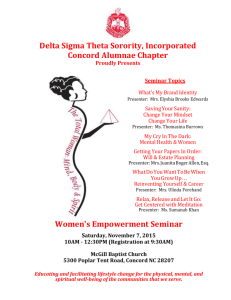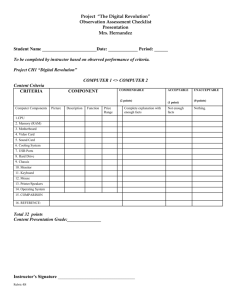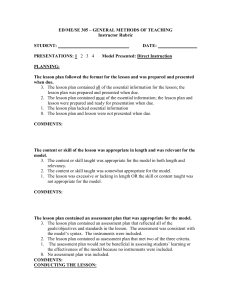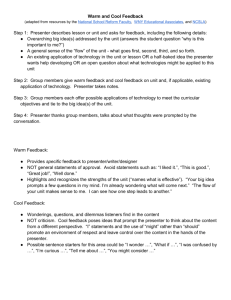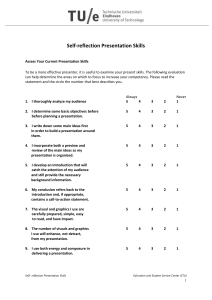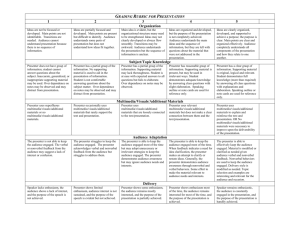Presentations - DigitalCommons@Liberty University
advertisement
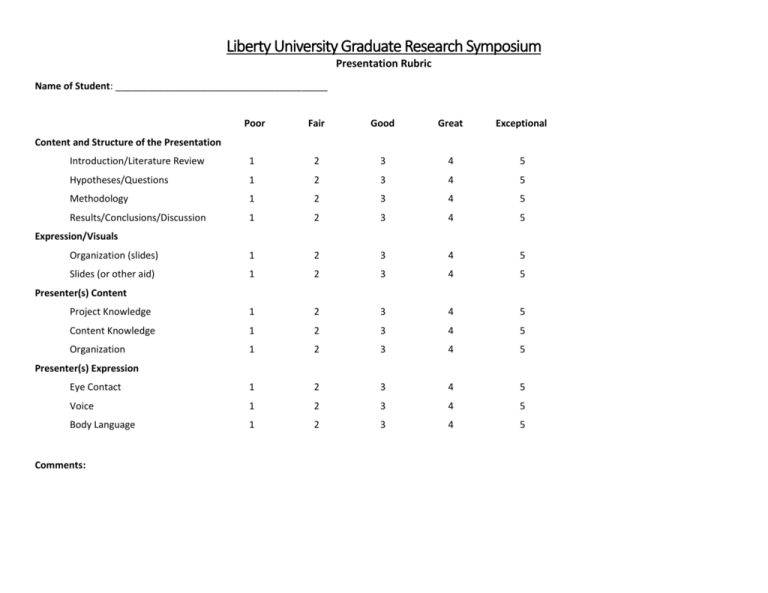
Liberty University Graduate Research Symposium Presentation Rubric Name of Student: ________________________________________ Poor Fair Good Great Exceptional Introduction/Literature Review 1 2 3 4 5 Hypotheses/Questions 1 2 3 4 5 Methodology 1 2 3 4 5 Results/Conclusions/Discussion 1 2 3 4 5 Organization (slides) 1 2 3 4 5 Slides (or other aid) 1 2 3 4 5 Project Knowledge 1 2 3 4 5 Content Knowledge 1 2 3 4 5 Organization 1 2 3 4 5 Eye Contact 1 2 3 4 5 Voice 1 2 3 4 5 Body Language 1 2 3 4 5 Content and Structure of the Presentation Expression/Visuals Presenter(s) Content Presenter(s) Expression Comments: Descriptions of the Types of Research for the Symposium Humanities o Original, first-hand account of an event or time period; Usually written or made during or close to the event or time period; Original, creative writing or works of art; Factual, not interpretive o Analyzes and interprets primary sources; Second-hand account of an historical event; Interprets creative work Examples - Diaries, journals, and letters; Newspaper and magazine articles (factual accounts); Government records (census, marriage, military); Photographs, maps, postcards, posters; Recorded or transcribed speeches; Interviews with participants or witnesses (e.g., The Civil Right Movement); Interviews with people who lived during a particular time (e.g., genocide in Rwanda); Songs, Plays, novels, stories; Paintings, drawings, and sculptures; Biographies; Histories; Literary Criticism; Book, Art, and Theater Reviews; Newspaper articles that interpret Hard and Social Sciences o Report of scientific discoveries; Results of experiments; Results of clinical trials; Social and political science research results; Factual, not interpretive o Analyzes and interprets research results; Analyzes and interprets scientific discoveries Examples - Published results of research studies; Published results of scientific experiments; Published results of clinical trials; Proceedings of conferences and meeting Publications about the significance of research or experiments; Analysis of a clinical trial; Review of the results of several experiments or trials Description of Each of the Sections in the Rubric Content Introduction/Literature Review: Does the student present a strong introduction or review of what the current literature says about his/her topic? Hypothesis/Questions: What are the predictions or questions the student is trying to answer with their presentation? Methodology: What are the procedures, participants, instruments, etc. used in the presentation? Results/Conclusions/Discussions: Where does the research show? What were the conclusions drawn from the research conducted/presented? Where do the findings lead us to in the future? Expression/Visuals Organization (slides): Does the order of the slides display a logical and coherent flow? Does it follow a logical sequence? Slides (or other aid): Is the powerpoint presentation wordy? In other words, do the slides have minimal text so that the student can elaborate on the content? Do the slides have creative and intriguing visuals? Presenter’s Content Project Knowledge: How well does the student answer to questions from the judges and/or audience? Content Knowledge: How well does the student articulate the research, and does he/she show a level of depth and substance? Organization: Does the student organize the information in a way that flows logically? Presenter’s Expression Eye Contact: Does the presenter connect with the audience? Voice: Does the presenter communicate clearly and is their voice audible to the audience? Body Language: Does the presenter display enthusiasm for their topic?

